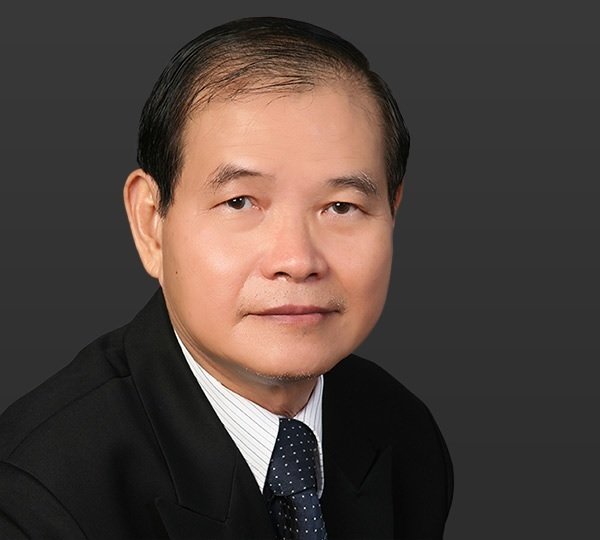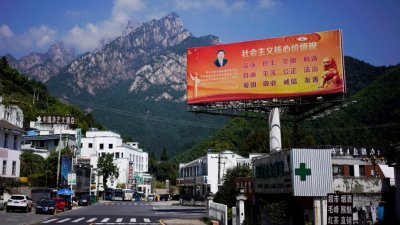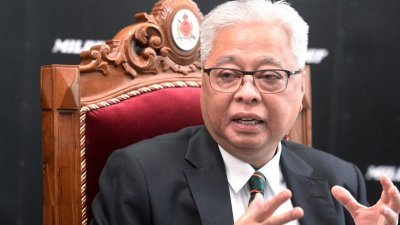1949年中国共产党取得政权后,便著手社会主义改造民营企业。1950年初,采取的策略是通过“公私合营”,将私有的民营企业改成公私共有,到了1956年大跃进和人民公社建立前夕,民营企业者基本已丧失了经营管理权,而所有资本也变成国有化。改革开放前,在没有民营企业的中国,所有国营企业的生产运营按计划经济准则办事,市场货源普遍匮乏,城市工人过著大锅饭的均贫日子,厂长的几十块钱工资可能比一个老练工人还少。
毛泽东逝世两年后的1978年,以邓小平为首的经济改革措施开始起步,首先在农村废除人民公社集体制,实行家庭联产承包责任制。稍后在城市采用市场经济原则,将本地市场向外资开放,允许恢复民营企业,而所有国有企业都经过改革的洗礼,向高效率和高科技应用水平迈进。
除了银行和金融业、石油化工、国防、传媒、海空港以及大型基建等关键行业,大批国企不是私有化,就是以承包制等方式出让给私人企业经营,以营造积极性、主动性和创造性,市场供应很快便蓬勃展开。
改革开放40多年下来,中国的民营企业就像一大批小树苗,长得支杆厚实,遍地开花。据估计,民营企业今天为国家提供超过一半的税收、60%的国内生产总值(GDP)、70%以上的创新,以及80%以上的城镇就业。成功的民营大企业,其活力之蓬勃、获利之丰厚,令人惊叹。更令人注目的是,中国国家资本也选择入股民营上市企业,分享利润。
民营企业之所以能快速茁壮成长,累积巨额资金和利润,除了政策支持、中国和海外吸纳中国相对廉价商品的庞大市场、企业家的拚搏精神,以及中国市场经济发展滞后而赋予的后发优势等因素,我们不得不提的另一个关键因素,即不对等的劳资关系。
改革开放前夕,受到优先照顾的城市户籍人口,只占全国人口的18%。另外82%的农村户籍人口是“自雇农民”,但必须以粮食缴交税收、另外还得按照政府规定价格,卖一部分给国家来支撑城市人口的消费。改革开放后,农民被允许进城务工或做生意,但保留农村户籍,基本不能享有城市户籍的政府福利。由于中国农村地少人多,农民工进城的人数近年来达到两亿多人。
进城农民工的劳资关系和条款,并没有根据社会变革变化,按照社会主义原则调整,而是按市场“你情我愿”由资方制定劳资关系和待遇。这个我们可以从三方面的考虑来理解。
第一,改革开发适逢全球国企私营化、全球化加剧、国际市场趋向竞争白热化时代。中国为了需以中低价产品取得国际市场,不得不舍弃马列主义,任由企业以最廉价工资雇用农民工。此外,对于民企的管控条款,例如与外资合作的限度,也乏善可陈,带著走一步看一步的态度。
第二, 农民工人数众多,随意让农民工加入城市户籍,并随著携带家眷入城定居,大城市的各项服务和住房供应将无法负荷,农民工工资低,城市廉租房严重短缺,很可能会出现类似印度或巴西大城市的贫民区,非中国政府愿意看到的丑相。
第三, 中国原有城居人口,在改革前既无资产也无积蓄。即使有储蓄,改革后的高通胀和高物价,储蓄也几乎会化为乌有。这一大群城市居民,包括政府高官干部,政府必须安抚照顾晚年生活,维持政局稳定。如将部分福利资金转移给大批农民工,将削弱对城市户的福利基础,对政权不利。
民营大企业就在政府没全面制定新劳工法下,以规模压低成本建立了世界工厂,迅速助中国发展成世界第二大经济体。在对外贸易,中国是出超国,外汇储备日增,但国内的贫富差距也快速扩大。
根据彭博社今年9月6日报道,中国的基尼系数自改革开放以来便不断上升,2008年达到0.5顶峰,之后稍缓但2015年之后又攀到0.47,比几乎所有西方资本主义国家的系数都高出许多,也就是说贫富差距比起西方国家更大。中国既是全球贫富鸿沟最巨大的20%国家之一, 又怎能说中国特色社会主义具有优越性?
黄大志:中国政府为何打击整治大民企?(上)英文稿:What has happened to China’s Large Private Entrepreneurs?
After the Chinese Communist Party took power in 1949, it began to transform private enterprises in a socialist way. At the beginning of 1950, the strategy adopted was to transform privately-owned enterprises into a public-private partnership. By the eve of the Great Leap Forward and the establishment of the People’s Commune in 1956, private enterprises had basically lost their management rights, and all their capital had become nationalised.
Before the reform and opening up in 1978, there were no private enterprises in China whereby all state-owned enterprises operated in accordance with the principles of planned economy, and the supply of goods in the market was generally in great scarcity. Urban workers then practised egalitarian consumption pattern and led a generally poor life; a factory manager’s salary of several tens of yuan might be even smaller than an experienced worker.
In 1978, two years after Mao Zedong's death, economic reform measures led by Deng Xiaoping began to take off. First, the People's Commune system was abolished in rural areas and replaced by the household contract responsibility system. Soon after, the principles of market economy were adopted in the cities, and domestic market was open to foreign capital investment. Whilst private enterprises were allowed to resume, all state-owned enterprises went through reforms and their operations moved towards higher level of efficiency and high-tech applications. With the exception of key industries such as banking and finance, petrochemicals, national defence, media, seaports and airports, as well as large-scale infrastructure, numerous state enterprises were either privatised or sold to private enterprises through contracting systems with an objective to stimulate business enthusiasm, initiative, and creativity. Very quickly, market supplies began to boom.
After more than 40 years of reform and opening up, China's private enterprises are like small tree saplings, growing thick and blooming everywhere. It is estimated that private enterprises today provide the country with more than half of taxation, 60% of GDP, more than 70% of innovations, and more than 80% of urban employment. The vigorous vitality and profitability of successful large private enterprises are indeed amazing. What is even more striking is that the Chinese government has also chosen to invest in private listed companies to share profits.
There are reasons why private enterprises thrive so rapidly and accumulate dramatic amounts of capital and profits. Besides policy support, contributing factors include the huge domestic and overseas markets which absorb relatively cheap Chinese products, the strong entrepreneurial spirit, and, inter alia, the advantages of a late comer like China with a lagging market economy. There is, however, another key factor that cannot be ignored which is the inequitable labour relations or employer-employee relationship.
Inequitable labour relations to support private enterprises
On the eve of reform and opening up, China’s urban population that received priority care and welfare accounted only for 18% of the total population. The remaining 82% of the population were rural “self-employed farmers” who had to pay taxes in kind, and to sell part of their harvest to the state at prescribed prices to support the urban population.
Following reforms, farmers were allowed to go to cities to work or do business. But they had to retain their rural household status which deprived them of government benefits allocatable to urban households. Due to limited supply of arable land shared by a very large rural population, there was a serious labour surplus which drove massive numbers of people to work or to do business in the cities as migrant workers. Their numbers have reached more than 200 million in recent years.
Despite social changes, the labour-management relations towards migrant workers in cities have not been adjusted in accordance with the principles of socialism. Instead, the labour-management relations and remunerations are set by employers according to market demand on the basis of "take it or leave it”.
At policy level, such inequitable practice is understandable if we consider three elements. First, economic reforms in China occurred in coincidence with the prevailing era of privatisation of state-owned enterprises worldwide, which intensified globalisation, and fierce competition in the international market. In order to gain access to the international market with low- and medium-priced products, China has to abandon Marxism-Leninism and allow enterprises to hire migrant workers at the cheapest wages.
Second, given the sheer number of migrant workers, if they are allowed to join urban household status at will, and bring their families to settle in the city, services, infrastructure and housing in big cities would be far short in supply to meet their demand. Moreover, there is a serious shortage of low-rent housing in cities which low-income migrant workers have a strong demand. Consequently, the risk that slums similar to Indian or Brazilian cities could emerge in large Chinese cities is high, a scenario that the Chinese government does not want to see.
Third, before the reform, China’s urban residents had neither assets nor savings. Even if they had some savings, high inflation and high prices after the reform would have virtually wiped out such savings. Out of the need to maintain political stability, it is critical for the government to assure urban residents, which include senior government officials, and take care of their old age with pensionable incomes. If parts of such welfare funds are transferred to migrant workers, the welfare foundation for urban households would be weakened and it will be detrimental to the regime.
It is in such a situation with a shortfall of new labour law that large private enterprises were able to build up massive manufacturing networks at reduced costs, and helped China develop quickly into the world's second largest economy. In foreign trade, China has gained much surpluses and its foreign exchange reserves are increasing day by day. However, the domestic gap between rich and poor is also widening rapidly.
According to a report by Bloomberg on September 6 this year, China's Gini coefficient has been rising since the reform and opening up, reaching a peak of 0.5 in 2008. This had since slowed down a little but climbed up again to 0.47 after 2015, which is higher than the coefficient of almost all Western capitalist countries. This means that the gap between the rich and the poor is larger than that of Western countries as a whole. Since China is one of the 20% countries with the largest gap between rich and poor in the world, how can it be said that socialism with Chinese characteristics is a superior social system?
要看最快最熱資訊,請來Follow我們 《東方日報》WhatsApp Channel.


















